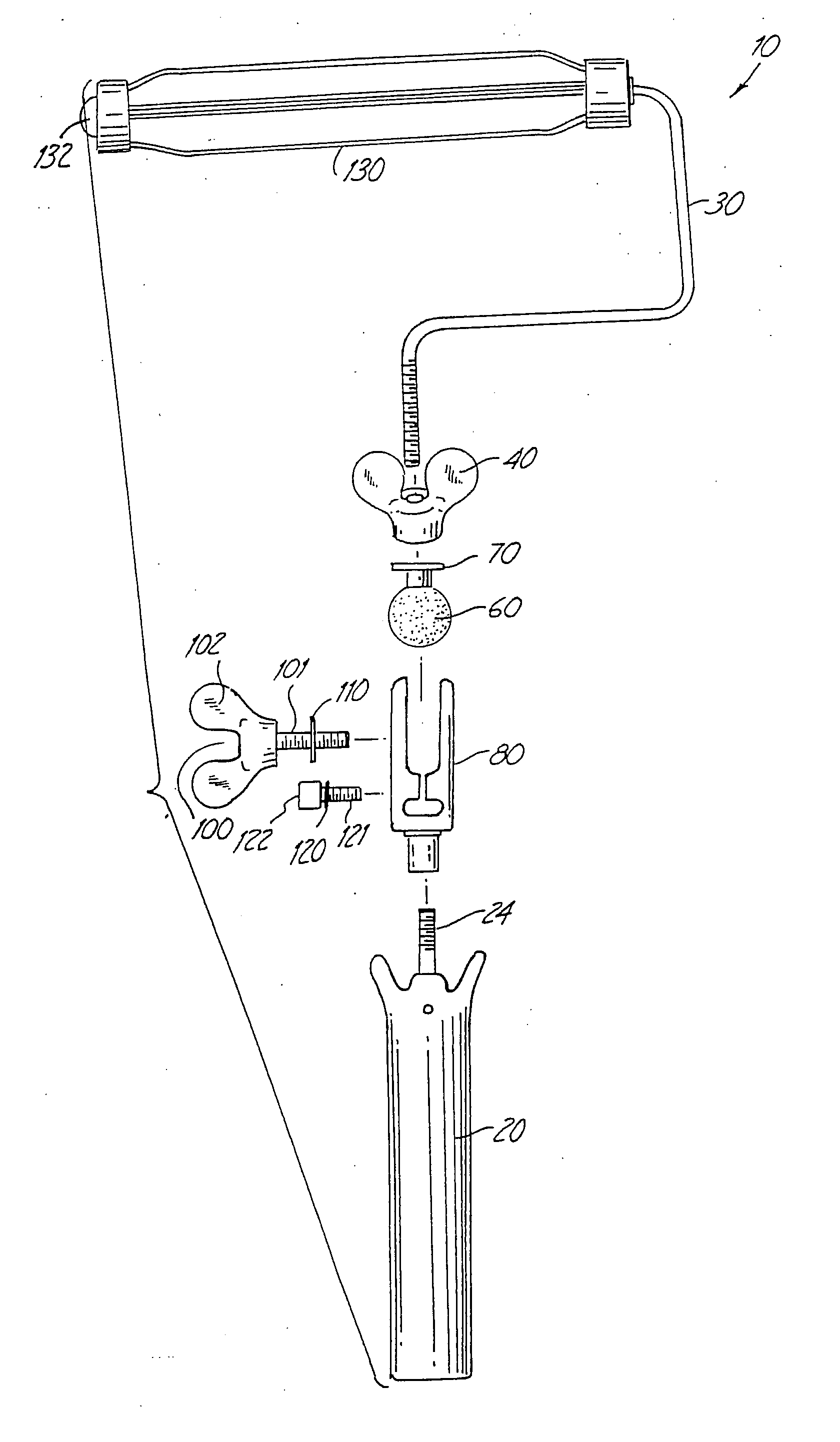Paint roller
- Summary
- Abstract
- Description
- Claims
- Application Information
AI Technical Summary
Benefits of technology
Problems solved by technology
Method used
Image
Examples
first embodiment
[0103] One embodiment of the paint roller 10 is shown in FIGS. 1-4. The paint roller 10 includes a handle 20, a shaft 30, a flexure joint 50, a connector 100, and a tube-receiving frame 130. The tube-receiving frame 130 is configured and arranged to accept a tubular paint applicator 140. The second end 22 of the handle 20 is selectively secured to the first end section 31 of the shaft 30 by the flexure joint 50. The tube-receiving frame 130 is rotatably secured to the second end 32 of the shaft 30.
[0104] The handle 20 preferably includes a grip portion 23 and a neck portion 24. The grip portion 23 may be constructed from any number of materials possessing the necessary structural integrity including specifically but not exclusively, aluminum, ceramic, wood and molded plastic. The grip portion 23 is preferably sized to comfortably rest within a user's hand (not shown). In this regard, the grip portion 23 may include finger articulations for enhancing fit with a user's hand. The neck...
second embodiment
[0130] A second embodiment of the paint roller 10 is shown in FIGS. 5 through 17. The second embodiment of the paint roller 10 is similar in many respects to the first embodiment of the paint roller 10. Accordingly, similar components and features will be identified by the same reference numeral.
[0131] Referring to FIG. 5, the paint roller 10 includes a handle 20, a shaft 30, a locking mechanism 40, a flexure joint 50, a connector 100, a spacing adjustment mechanism 120, and a tube-receiving frame 130. The tube-receiving frame 130 is configured and arranged to accept a tubular paint applicator 140. The second end 22 of the handle 20 is selectively secured to the first end section 31 of the shaft 30 by the flexure joint 50. The tube-receiving frame 130 is rotatably secured to the second end 32 of the shaft 30.
[0132] The handle 20 preferably includes a grip portion 23 and a neck portion 24. The grip portion 23 may be constructed from any number of materials possessing the necessary ...
PUM
 Login to View More
Login to View More Abstract
Description
Claims
Application Information
 Login to View More
Login to View More - R&D
- Intellectual Property
- Life Sciences
- Materials
- Tech Scout
- Unparalleled Data Quality
- Higher Quality Content
- 60% Fewer Hallucinations
Browse by: Latest US Patents, China's latest patents, Technical Efficacy Thesaurus, Application Domain, Technology Topic, Popular Technical Reports.
© 2025 PatSnap. All rights reserved.Legal|Privacy policy|Modern Slavery Act Transparency Statement|Sitemap|About US| Contact US: help@patsnap.com



